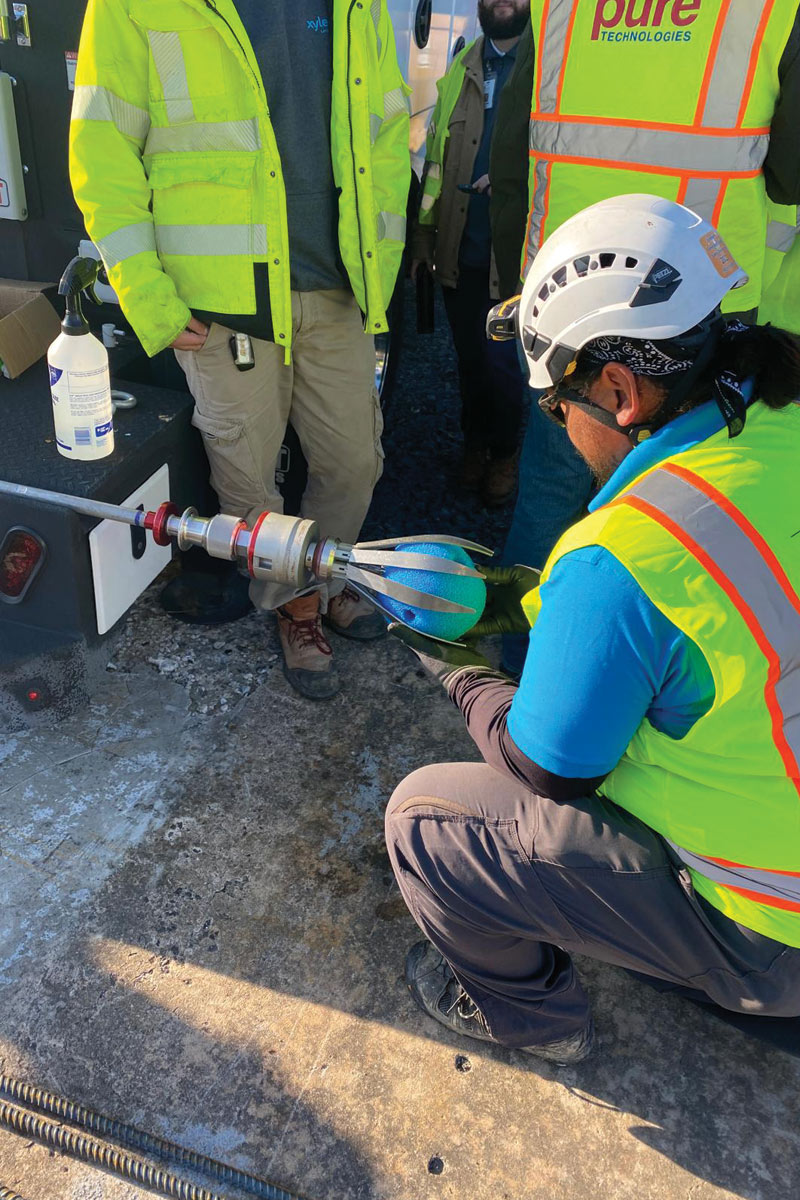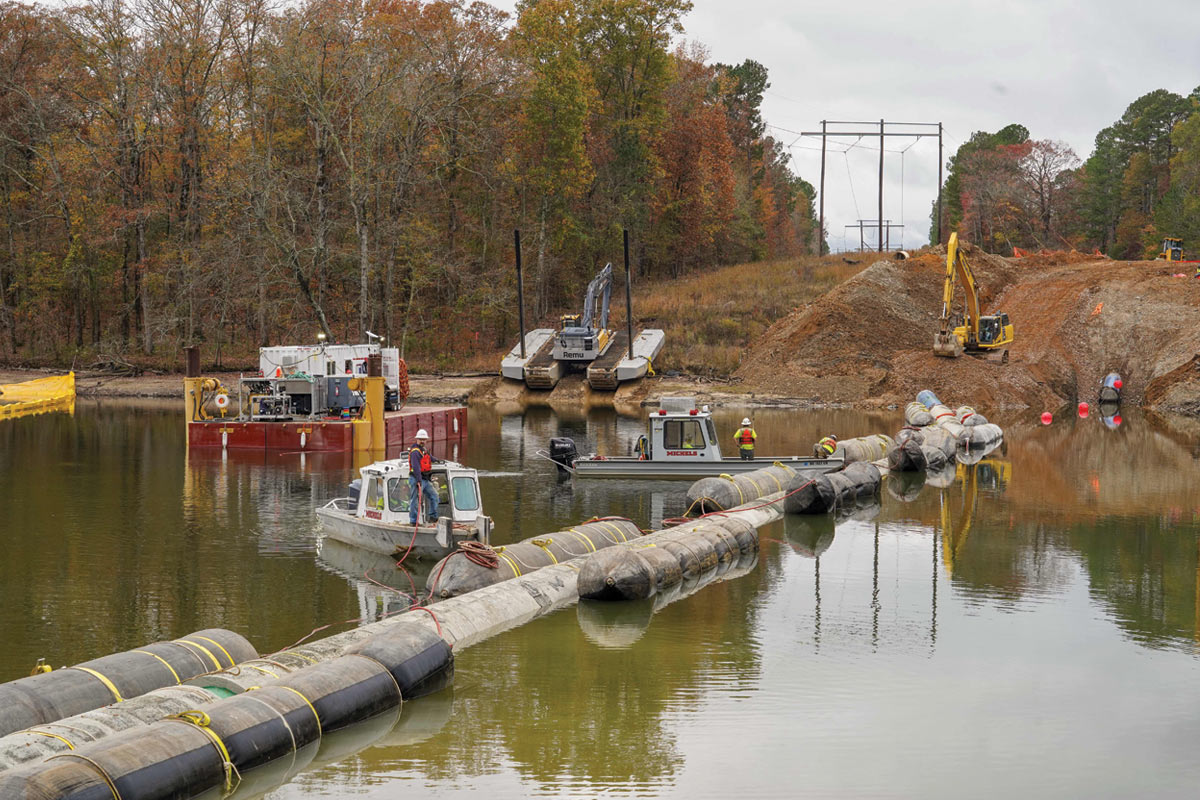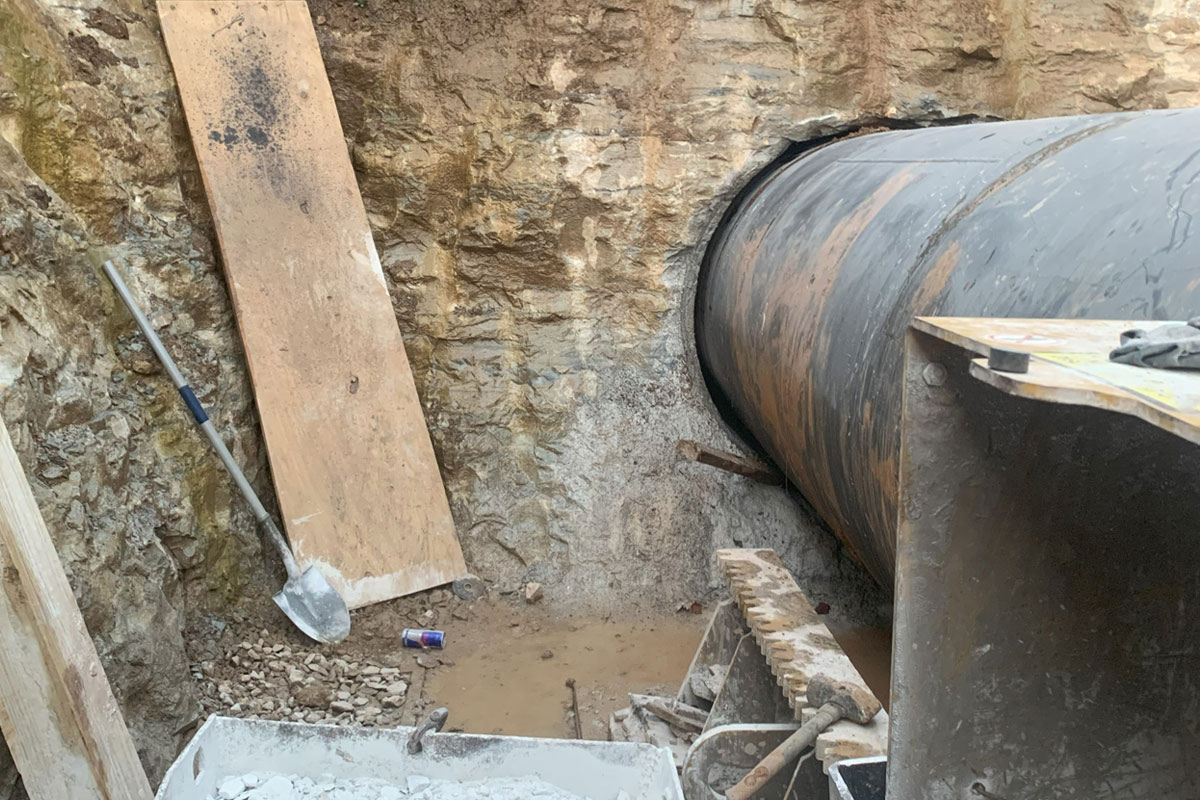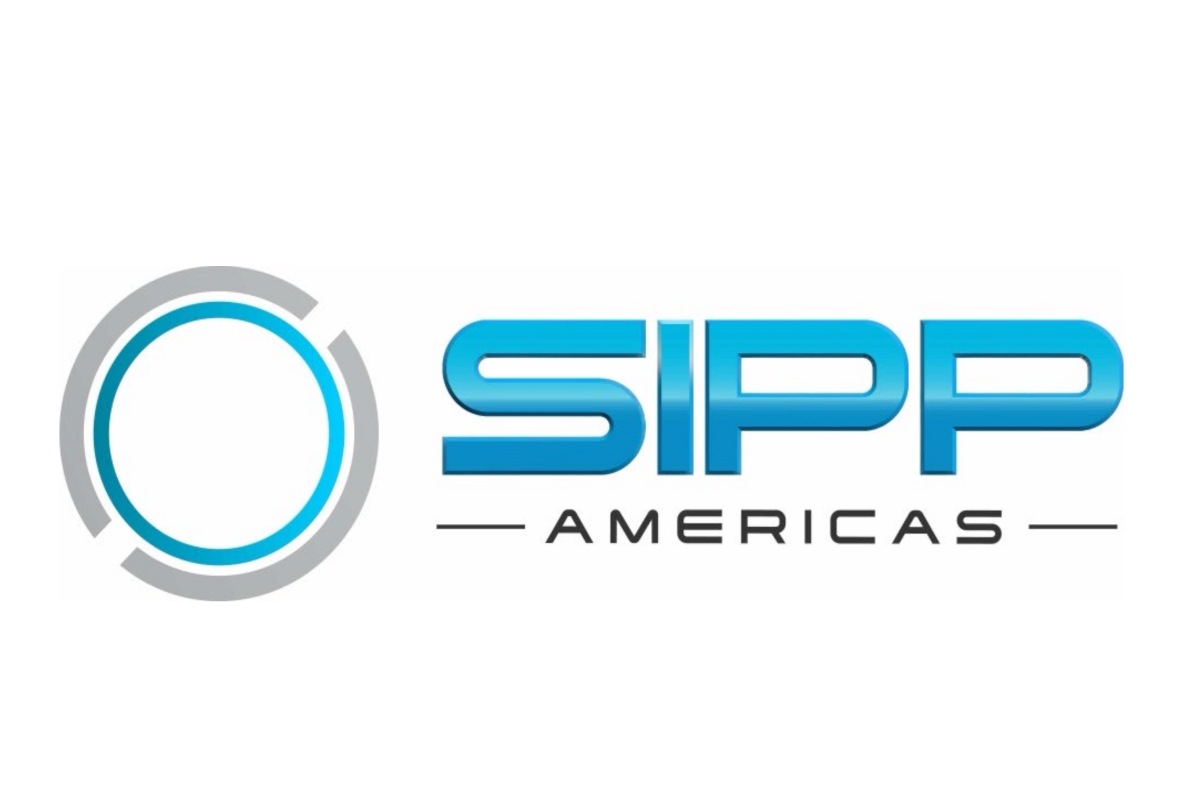Locating Leaks on a Rural Pipeline in Iowa Park, Texas
The City of Iowa Park, Texas suspected the Cypress Water Transmission Line had at least one leak. Metering data showed unexplained water loss, and the pipeline — installed in the 1970s — has a history of leaks.
Iowa Park is a small community that covers about 15 square miles of North Texas. The Cypress Water Transmission Line provides a critical supply of water to the City’s 3,000 service connections and six wholesale customers. The pipeline conveys water 13 miles from the Cypress Water Treatment Plant in Wichita Falls to Iowa Park. It cuts through hills and thick mesquite forests. The City had historical knowledge of the pipeline’s location but lacked records with its exact position. Furthermore, the remote area and lack of location data meant that finding leaks by walking the line or other traditional methods would be extremely challenging.

Due to the pipeline’s importance and problematic past, the City wanted to get a baseline understanding of its condition. They needed to determine if it was a good candidate for replacement under a state grant program. In July 2024, the City partnered with Pure Technologies, a Xylem brand. They aimed to perform an inline leak inspection on the Cypress Water Transmission Line.
Selecting SmartBall
Halff Associates, an infrastructure consulting firm serving the City, recommended Pure Technologies’ SmartBall inspection tool. They chose it for its precision and ease of use.
The SmartBall inspection required only two existing access points. The Pure Technologies team inserted the tool into the pipeline through a bypass at the Cypress Water Treatment Plant. They then extracted it from a gate valve in Iowa Park. Going with the flow, the free-swimming SmartBall easily covered the 10-mile inspection distance in just over eight hours.
Pure Technologies tracked the tool’s position throughout the inspection. They used sensors placed on the pipe surface in strategic locations. Tracking points were the only places where the pipeline was exposed, and this was quickly accomplished by excavating small post holes with a Hydrovac. Due to the ease of the inspection, the City was able to focus limited equipment and personnel on other projects.
Locating Leaks
SmartBall uses an acoustic sensor to listen for leaks as it rolls through the pipeline. The sensor’s proximity to any leaks means it’s much more sensitive than external detection methods. This is especially true on large, concrete pipelines like the Cypress Water Transmission Line.
Pure Technologies can pinpoint leaks within 6 ft of their actual location. They use data recorded by the tracking devices and sensors onboard the SmartBall. This data also indicates whether a leak is occurring on a pipe joint, barrel, or pipeline feature. A concrete pipe with a barrel leak may be structurally weakened and in danger of failing.
The Cypress Water Transmission Line is made of bar-wrapped pipe (AWWA C303) 16 in. in diameter. Bar-wrapped pipe typically leaks before breaking, so a leak inspection can prevent catastrophic failures. It also provides valuable information about the pipeline’s structural health.
SmartBall detected three leaks on the Cypress Water Transmission Line. This included two large leaks identified during a preliminary data analysis in the 24 hours following the inspection.
Making Repairs
With dig sheets guiding the way to the leak locations, the City of Iowa Park took quick action to repair the damaged pipes. City crews spent six hours clearing mesquite trees to access the line at one leak location. They braved wild hogs and other dangers in the brush. Another leak was in the middle of a former shrimp pond. Given these locations, finding the leaks would have been near impossible without inspecting the line. The SmartBall data was spot on, saving the City time and resources. It also reduced the extent of excavations and enabled point repairs.
The City’s contractor replaced 12-ft sections of the pipe with PVC and dresser couplings. Two of the leaks were on pipe joints where the welding likely failed. The third leak was on the pipe barrel, where there was a hole the size of two softballs. The repairs likely prevented further damage to the pipeline and may have averted a costly failure. Additionally, the City is saving between 100,000 and 500,000 gallons of water per day. Over the past year, its nonrevenue water has dropped from 14 to 8 percent, well below targets set by the Texas Water Development Board.
Drought is a persistent threat in North Texas. Hence preventing water loss is critical for the region’s water supplies. Addressing the leaks will also save the community money, especially with the rising cost of chemicals and treatment.
Conclusion
The SmartBall inspection also provided the City of Iowa Park with a better understanding of the line’s location. This information is critical for future pipeline maintenance, repairs, or replacement. The City has addressed some of the Cypress Water Transmission Line’s most pressing issues. They are now equipped with a baseline understanding of its condition. This knowledge will give the City time to secure funding for replacement, estimated at more than $20 million. They may also consider other management alternatives.
Ramsey T. Hemaidan is business development manager at Xylem. Michael McCarty II, is public works director at the City of Iowa Park.




